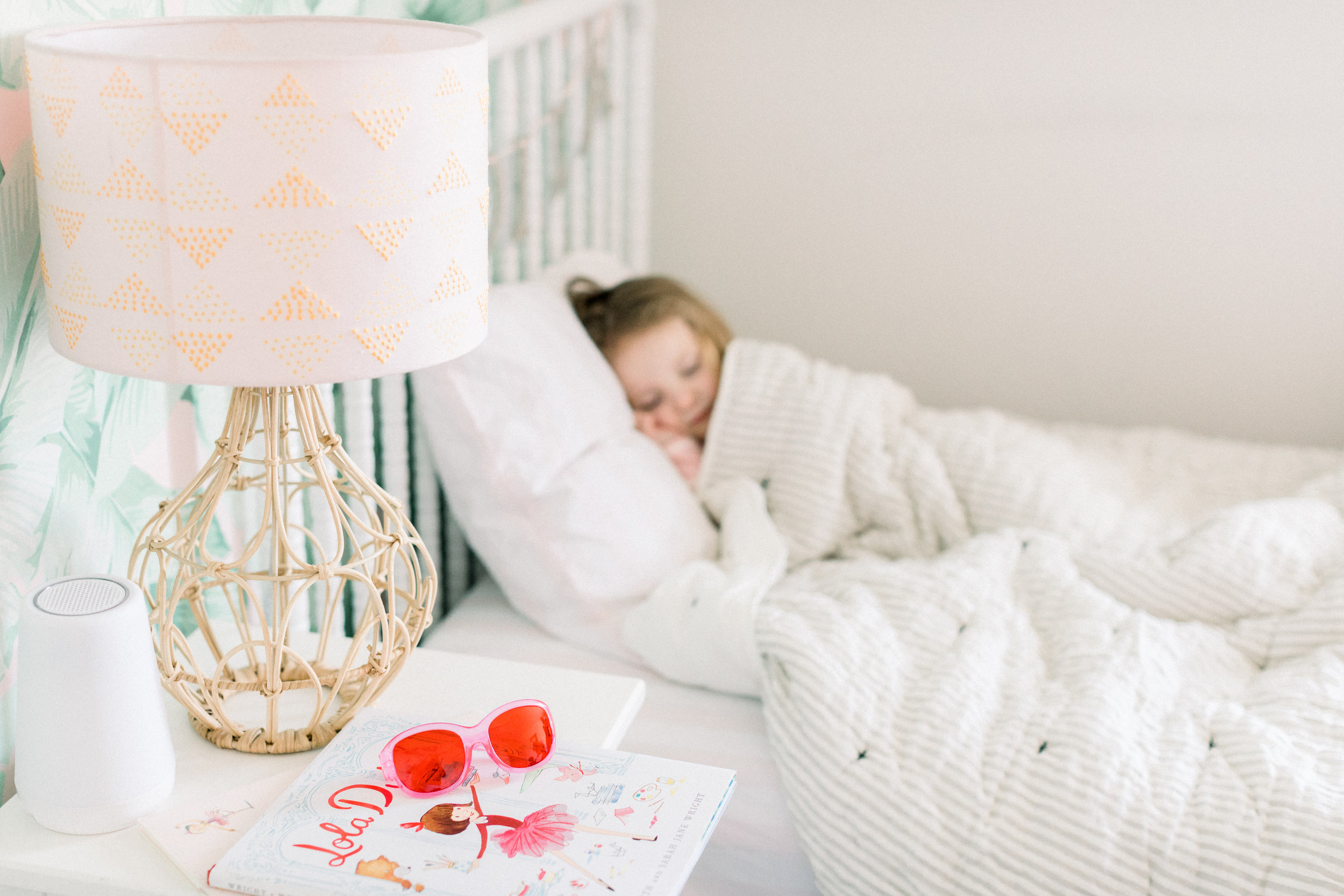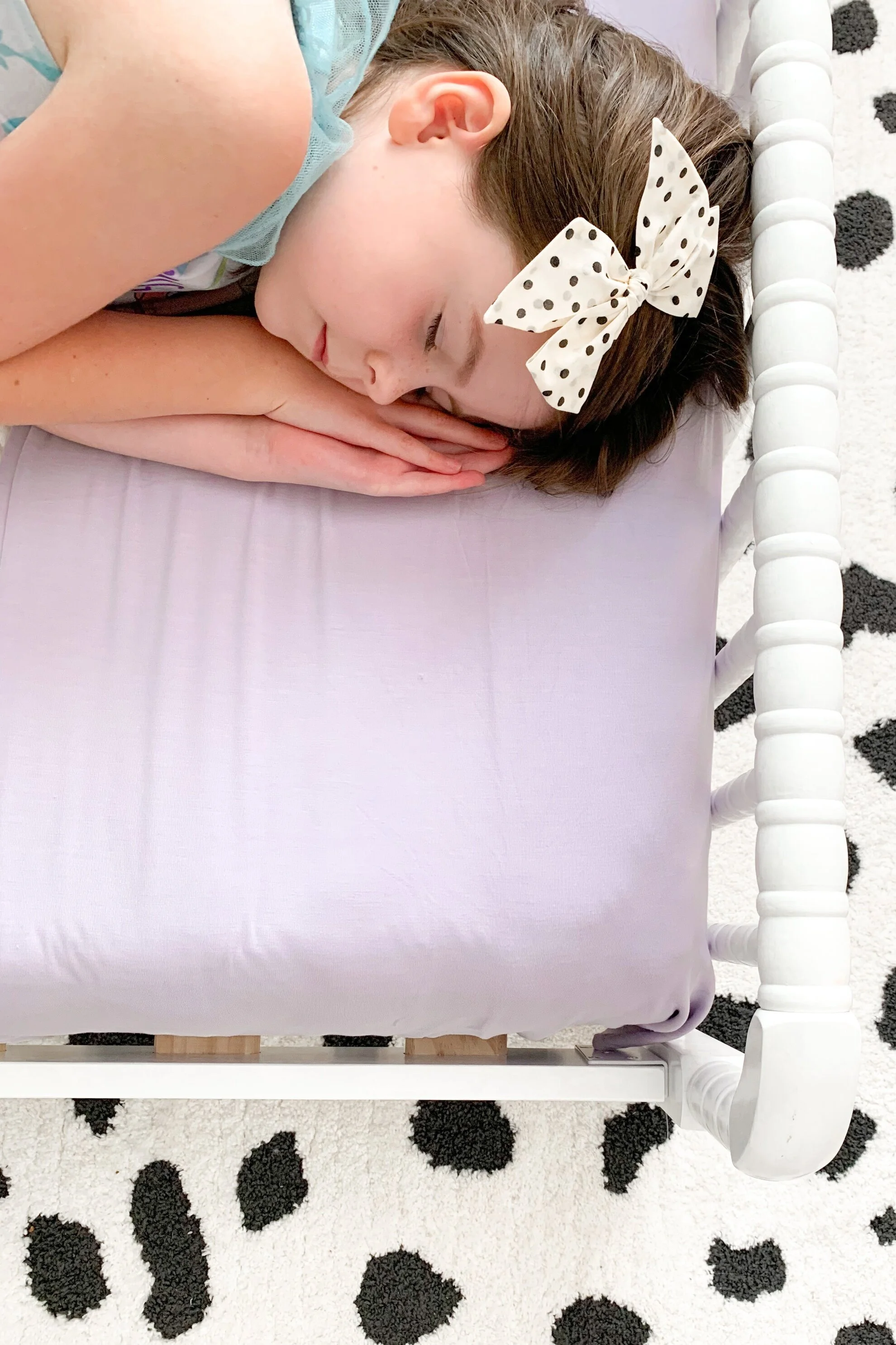Toddler Sleep Training: Gentle No-Cry Methods
Welcome to Toddler Sleep Training 101!
These are my foolproof and gentle toddler sleep training techniques that I have used for years to help my clients teach their young children to sleep all night, and I can’t wait to share them with you. It doesn’t have to involve hours of crying at bedtime, or even locking the doors— we make it FUN, and work with the science behind the sleep, to make sure we are working with the body and mind to our advantage. Toddler sleep training can be tricky, and most toddlers need a bit of help falling asleep at night, and staying in bed all night, too.
Here are the top reasons why you may need some Toddler Sleep Training 101, using my gentle techniques to help them sleep all night:
Your Toddler wakes up crying at least once per night
Your Toddler comes into your room/bed at least once per night
You and Toddler are currently sharing a bed/room together at some point in the night
Your Toddler refuses to go to bed at night
Your Toddler takes 1-2 hours to fall asleep at bedtime
Toddler has picked up habits or sleep associations used on vacation or while ill
Your toddler refuses to nap but still needs one, or wakes up screaming from a nap
Toddler wakes up too early, or toddler wakes up before 5am
Your Toddler wakes at night and asks for food or drinks (not water)
Here are 10 toddler sleep training foolproof ways and gentle techniques that will help your child sleep all night:
Know how much sleep your child should be getting before you begin toddler sleep training.
For children under 3 years old, especially while toddler sleep training, you’ll want to keep the nap, which will ideally last 1.5 hours, until at least the age of 3 or when your child is no longer completely melting down by dinnertime. For children on a 1-nap schedule under 2.5 years, use a 5 hour wake window until nap time, followed by a 6-hour wake window until bedtime. For children over 2.5 years, use a 6-hour window prior to nap time, with a 5-6 hour window following the nap. If your toddler is over 3 years and no longer napping, start your bedtime routine approximately 12-13 hours after waking for the day.
2. Have a consistent bedtime routine
When you begin toddler sleep training to help them sleep all night long and stay in bed all night. Some gentle techniques to use while toddler sleep training during a bedtime routine could involve teeth brushing, one 15-minute tv show, followed by books in their room, singing/prayer, and lights out. Stay consistent for at least 3-4 weeks and limit travel during any routine implementation. Gentle toddler sleep training techniques take time and patience, so make sure you reward your child (and yourself!) any time small sleep goals have been met.
3. Create an ideal sleeping area
Having a cozy bedroom to help them sleep all night while toddler sleep training is a must. Make sure the room is set between 68-72 degrees, is completely dark (a nightlight and/or Ok to Wake Clock is great!), and white noise is running continuously to block out unwanted noise or bumps in the night. If possible, keep the crib until your toddler is at least 2.5 years old before making the transition to the toddler bed (more about that here). If it’s still light out, try using a black out shade to darken the room for naps and bedtime (we swear by this one, and it’s under $50.)
4. Turn off the devices, or shield from blue light
Toddler sleep training can be really tough if their brains are “tricked” into thinking it’s daytime, which is exactly what the blue light emitting from your television or device will tell your brain. Stimulation from unwanted blue light will reduce the body’s ability to “shut down” or calm down before bedtime, something you absolutely need before you attempt our gentle techniques with toddler sleep training. To help them sleep all night long and keep the tablet or TV show, try using these True Dark blue light glasses that reduce 40% of blue light exposure when worn, so that you won’t have any trouble calming your toddler down for bedtime after watching their favorite Disney show or playing their games on the tablet.
5. Make sure they get regular exercise!
When you are sleep training a toddler, the most foolproof technique is to get them moving! During the summer months, when your child is outside playing more, don’t them seem to fall asleep faster at bedtime as well? During the cold months, it’s easy to put on a good movie and snuggle, but without expending some of that energy, it can be difficult for your child to fall asleep quickly at bedtime, and sleep all night in their own rooms. Try building forts, playing hide and seek, chasing games, obstacle courses, and then after lights out, be SUPER boring if you stay in the room with them while they fall asleep. Trust me, falling asleep as a busy tot is much easier if you’re not constantly engaging with them at bedtime.
6. Avoid meals and caffeine
If you are sleep training a toddler but they are wired off of heavy carbs or caffeine within 5 hours of bedtime, you may have some trouble getting them to sleep at bedtime. Snacks given even one hour prior to bedtime can cause digestion issues, and caffeine that could be hidden in sodas, teas (or chocolate even!). I like to “close down” the kitchen about 1-2 hours before the bedtime routine begins.
7. Don’t use cry it out
Don’t use cry it out when you are toddler sleep training, they are WAY too old for this, and it could weaken the bond you’ve worked on for years with them. Instead, after your bedtime routine, try sitting beside your child or checking on him or her every five minutes until they are asleep while toddler sleep training, which is a great gentle technique to use to help them sleep all night long. Make sure you’re back in five minutes or less at first, and make up boring excuses to leave each time briefly- ideally, your toddler will be asleep within three checks!
8. Keep them in the loop
Let them know what’s coming! When you begin toddler sleep training, you’ll want to constantly remind them of what step is coming next when you are introducing a new routine with new expectations. Let them know that after we read the book, you’ll rub their back for one song, and then leave the room for example. After the book is read, have them lay down and explain again that you’ll rub their back for one minute, and then you will leave the room. You can also do this at nighttime when they wake you up, after you walk them back to their room. Sometimes toddlers just need some reassurance at night!
9. Sleep rewards
Introduce The Prize Basket: This is probably the best gentle toddler sleep training technique in my arsenal for obvious reasons: it’s fun! When and if your toddler follows the new sleep routines and expectations, they can choose a prize out of a basket, box, or hat every morning for a job well done. Have your toddler pick out the toys or candy pieces at the store and fill the basket with you, and yep, remind them of this basket and what it means every single night at bedtime. Grab stuff at the dollar store or Target dollar spot and let them fill it with you!
Now that you have a better understanding of what to do before you start toddler sleep training, you’ll want to grab my no-cry Toddler Sleep guide:
Now you need a gentle Toddler Sleep Training solution that doesn’t involve tears!
Yes, it exists with our BRB Method!
Your toddler IS capable of sleeping all night in their beds, and go to bed happy— and I have the tools to show you how!
Introducing: THE TODDLER SLEEP DIY GUIDE
This top-rated DIY sleep guide is designed to help your toddler fall sleep independently and stay in bed all night (bye bye co-sleeping or rocking to sleep!), have a full 10-11 hours of sleep every single night and create a more consistent nap schedule. Using the popular “BRB” method, you’ll support your toddler along the way, using the science behind the sleep, to support them along the way (we don’t do CIO or locking doors, they are too old for that!)
Here’s what a recent client, Heidi Montag Pratt from the Hills MTV, had to say about her experience with our “Be-Right-Back”





